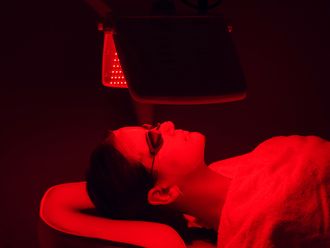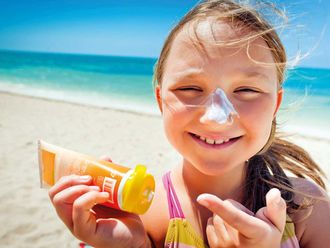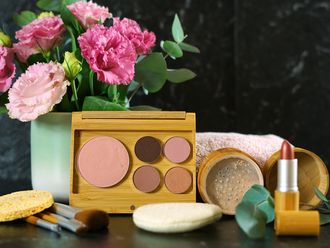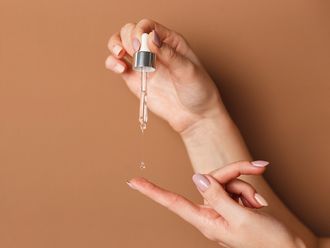
Consumers have many choices when it comes to sunscreen, but it can be confusing to know which product to use and how best to wear it. The best sunscreen, experts say, is the one you'll wear every day.
Regular use of a broad-spectrum sunscreen can reduce the risk of skin cancer for many people.
In the United States, rates of new skin cancer have been on the rise for the past two decades, affecting people of every age and race. The good news is that while skin cancer is the most common cancer among Americans, experts say it's also the most preventable.
Here's what to know about choosing the best sunscreen for your needs and how to wear it:
What's the difference between chemical and mineral sunscreen?
Chemical sunscreens contain a range of chemical filter ingredients such as avobenzone, octinoxate and oxybenzone that protect your skin by absorbing and filtering ultraviolet light. They also need time to absorb into the skin and should be applied at least 20 to 30 minutes before exposure.
Mineral sunscreens, also called physical sunscreens, use titanium dioxide and zinc oxide to physically block and reflect UV rays. These sunscreens sometimes stay visible on the skin.
There are 16 active ingredients that the Food and Drug Administration deems to be "generally recognised as safe and effective" for sunscreens - 14 are chemical UV filters and two are mineral filters.
What are the pros and cons of chemical vs mineral sunscreens?
Chemical sunscreens are invisible once rubbed into the skin and usually offer the most enjoyable cosmetic experience - it probably won't feel thick or caky on the skin. But they are more likely to irritate sensitive skin and raise some health and environmental concerns.
Mineral sunscreens are safe for sensitive skin. But they are more likely to leave a white hue on the skin, which can be particularly visible on dark skin tones.
What are the health concerns with chemical sunscreen?
The easy absorption that makes chemical sunscreens popular also means that the active ingredients in many formulations can be absorbed into the bloodstream, even after a single use, according to research by the FDA. The agency has said it needs more data on active sunscreen ingredients "to fully understand their absorption into the body as well as the long-term effects of absorption."
The FDA has reiterated, however, that "absorption does NOT equal risk."
"Just because something gets absorbed into the bloodstream doesn't mean it causes harm," said Steven Q. Wang, the medical director of dermatologic oncology at Hoag Family Cancer Institute in California.
Some critics of chemical sunscreens have raised concerns that active ingredients such as oxybenzone and octinoxate are potential endocrine disrupters or chemicals that can mimic hormones such as estrogen. There's no conclusive data to support this, experts said.
"I think the data is mixed on this, but I tell people that for most adult patients, it's not going to make any difference," said Abigail Waldman, director of the Mohs and Dermatologic Surgery Center at Brigham and Women's Hospital in Boston.
Research is still needed to determine the long-term effects of certain chemicals in sunscreen, but the risks of cancer-causing UV exposure are well known, Waldman said. "A few sun burns early in life make you much higher risk for skin cancer down the line," she added.

Which one should I pick?
Chemical sunscreens and mineral sunscreens both provide adequate protection against harmful UV rays, experts said. Aim for an SPF 30 or higher.
For most people, it comes down to personal choice. If you choose a chemical sunscreen, make sure it's labeled "broad spectrum," which protects against both UVA and UVB rays that damage the skin. All mineral sunscreens offer broad spectrum protection.
If you're concerned about the health or environmental questions of chemical sunscreens, opt for a mineral sunscreen. The active ingredients in mineral (physical) sunscreens are not absorbed into the skin, and mineral sunscreen formulations are improving so that they are less likely to leave a white or purplish cast on the skin.
Mineral sunscreens are recommended for those who have existing skin conditions, an autoimmune disease such as lupus or are undergoing treatments such as chemotherapy or radiation, which can make people more sensitive to the sun.
Are tinted sunscreens okay?
Many mineral and chemical sunscreens now come with added tints to match a variety of skin tones, but the benefits are more than cosmetic.
Tinted sunscreens may offer greater protections to people of colour and added protection to people who are prone to hyperpigmentation or melasma, a skin condition that causes patches or spots, said Nkem Ugonabo, a board-certified dermatologist who specializes in cosmetic dermatology and lasers.
Those with dark skin tones aren't as susceptible to burning, but they are more vulnerable to the effects of visible light. Visible light is the light perceived by the human eye such as sunlight, office lights and headlights, and it can exacerbate hyperpigmentation in the skin. Iron oxides, the ingredient in tinted sunscreens and foundations provides protection against visible light.
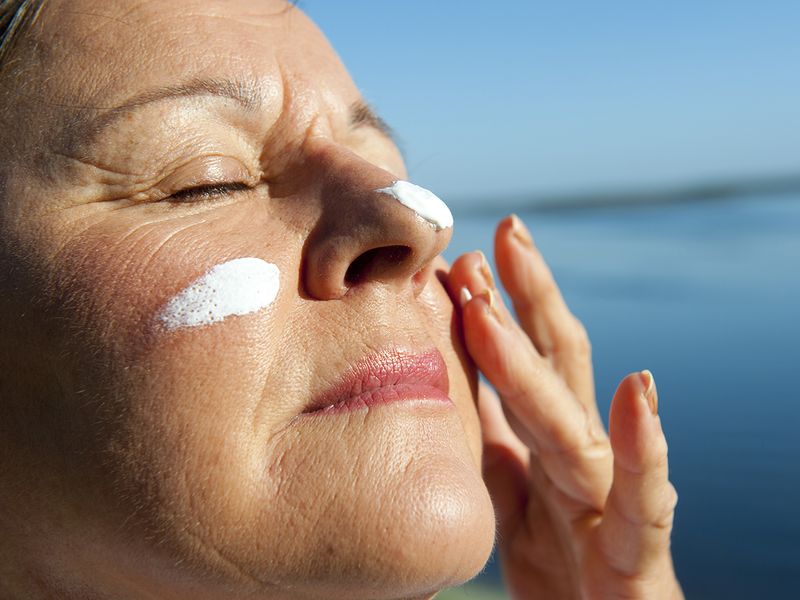
Are chemical sunscreens bad for the environment?
Hawaii and Key West, Fla., have banned the sale of chemical sunscreens containing oxybenzone and octinoxate, following laboratory studies that suggested coral reefs may be harmed by exposure to the chemicals. .
The studies, though, are not conclusive. "Based on the available research, there's really no data to show that the actual decline of reef health has anything to do with people wearing [chemical] sunscreen," said Andrea Suarez, a board certified dermatologist practicing in Houston.
Some sunscreens carry labels claiming they are "reef safe." Wang and other dermatologists interviewed by The Washington Post were skeptical of the claim.
"The labeling of 'Reef Safe' or 'Reef Friendly' has never been officially certified - no organization has authorized it, and the FDA doesn't regulate it," Wang said.
If traveling to a destination that bans the kinds of filters found in chemical sunscreens, pack a mineral sunscreen instead.
Do children need different sun protection?
For children under 6 months old, it's best to keep them out of direct sunlight - and with clothes, umbrellas and hats. For children over 6 months old, sunscreen is important, and regular sunscreen use at a young age can build healthy habits in the long term, dermatologists said.
Pediatricians say chemical sunscreens are considered safe for older children, and that the use of any sunscreen is safer than unprotected exposure to the sun. Wary parents concerned about the chemicals in some sunscreens can opt for mineral sunscreens for children.
What body parts are most easily missed when applying sunscreen?
Most people wearing sunscreen dutifully cover arms, shoulders and face, but the smallest parts of the body tend to get overlooked, including the lips and hairline.
"People always tend to forget their ears," Waldman said. The folds between nose and face and inside the ears are often forgotten, Waldman said.
Wang said the top of the head is the most-missed part of the body - and where he tends to find melanomas develop in older patients.
Men and women start to experience thinning hair as early as their 30s and 40s, including the widening of their hairline part, Wang said. Most people avoid putting sunscreen on their head because it's messy and makes their hair look flat or greasy.
"But the majority of your lifetime sun exposure is incidental - having lunch with a friend outside, standing outside chatting with your buddy," he said. "On your scalp, no one sees that problem until you start losing a lot of hair - and then in your 60s and 70s, you're seeing skin cancer on the top of your scalp."
Wear a hat, he said, and also limit prolonged exposure in the first place.
"You should not be reaching out for sunscreen as your first line of defense against UV radiation," Wang said. Avoid direct sunlight when possible by staying in the shade, wearing a hat or using an umbrella.
How much sunscreen should I be using?
Be generous with the application and wear it consistently (even when it's cloudy outside).
For an easy visualization, remember a shot glass (roughly 1.5 ounces) worth of sunscreen for your body and two fingers worth for your face and neck. Apply more if you're bigger or taller than average.
"It's going to depend on how much you have exposed, but if you're wearing short sleeves, you also want to get your arms and the backs of your hands," Suarez said.
If you'll be spending time in the sun, reapply every two hours. If you're swimming or sweating, reapply as soon as you're out of the water - even if that's sooner than two hours.
You can broadly gauge if you're wearing enough sunscreen based on how quickly you go through a tube of it (a family of four should easily use up a regular-size tube spending the afternoon at the beach) and how long it takes to rub in.
"You need to put on enough to where it's taking 20 to 30 seconds to really rub it in," said Erica Lee, associate director of Mohs micrographic and dermatologic surgery at Memorial Sloan Kettering Cancer Center in New York. "Your skin should be white at first."
Do I need to apply sunscreen if I'm spending my day indoors?
Daily sunscreen is a nonnegotiable, Waldman said. That includes on overcast days, in the winter and if you're staying inside.
"You really need to put on sunscreen every day because you get a lot of UV exposure through the windows; even walking to the car, you get a decent amount," she said, noting "exposed skin" on a typical day means exposed face, neck, hands and arms, if you are wearing short sleeves.
A daily sunscreen for indoor days doesn't have to be anything fancy, Waldman said: "It can be a moisturizer with sunscreen - anything available at the drugstore that has an SPF 30."
Should I use a spray or lotion sunscreen?
Waldman discourages using spray sunscreens on the face because the formulations are usually alcohol-based, which can be drying. Some brands of spray sunscreen have been recalled because of the presence of benzene, a carcinogenic compound and a byproduct of the air propellant.
For aerosol sunscreen on the body, use it outside in a well-ventilated area, ensuring you get good coverage on your trunk and extremities, she said.
"I usually tell patients, if you're going to be outdoors a lot, I recommend the first application be lotion," Lee said. "For touch-ups, a spray is fine."
Regular use of a broad-spectrum sunscreen can reduce the risk of skin cancer for many people.



